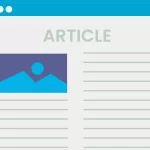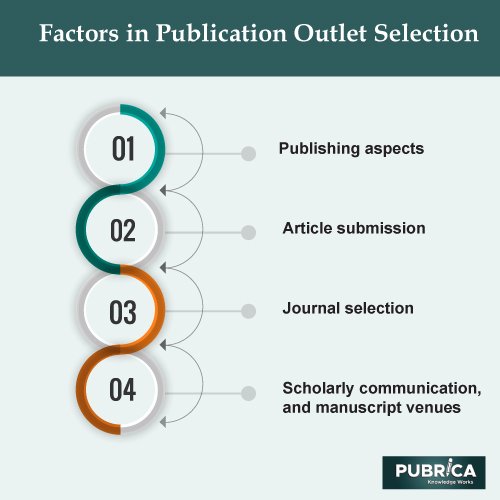
Clinical Literature Review on Effective Supervision in Practice Settings
December 20, 2021
How do you write an original research article and have it published?
January 3, 2022In brief
The increasing number of journals makes it challenging to choose the best place for publishing a manuscript(SK1). This is exacerbated further by the selection criteria that may differ from one field to the next. As a result, adequate cross-disciplinary research is essential to fully comprehend the specific challenges that dominate a particular sector in journal finder service. Using the responses to a global survey of 235 open access journal writers, the current study analyses the factors that impact publication selection in medicine and the social sciences. The findings demonstrate that writers in both fields value ‘peer reviewed’ status the highest while paying relatively more minor attention to the journal’s ‘number of yearly subscribers.’ Those in the field of medicine, on the other hand, give significantly more weight to (1) the impact factor, (2) the journal’s inclusion in abstracting and indexing services, (3) the prestige of the publisher, and (4) online submission with tracking facility when compared to authors in the social sciences.
Introduction
In terms of academic knowledge creation, publications reduce research and identify and fill knowledge gaps, advancing the scholarly community. Completing these duties is difficult despite the significance of publishing unless the author chooses the appropriate publication site. In the scholarly world, the process of selecting a scientific journal(SK2) finder good platform for publishing an article is essential.
The measures an author must take to select a suitable location are dependent on a variety of circumstances. The type of article (e.g., study, review, brief communication), the subject on which it was written, and the format of the publication venue (e.g., book, conference, journal) are all factors to consider. As a result, knowing which variables of journal selection apply to a particular author is crucial for choosing the right publication path.

The present study has three primary objectives:
- To determine the variations between medical and social science writers’ article publishing concerns.
- The goal is to figure out what the underlying categories are that drive the journal selection criteria.
- To condense specific previously established journal selection criteria into a smaller number of underlying categories.
Factors in publication outlet selection
Many research has been undertaken to investigate the factors that influence the selection of appropriate publication sources. Most of these programmes are focused on a single subject, such as management, health, real estate, and social sciences. The importance of various rare journal selection issues, such as the capacity to match an author’s objectives, existing relationship with the journal staff, publishing dependability, and the desire to assist the organisation that supports the journal, is highlighted in the essay. Journal Selection Services (SK3)also mentions applicability in terms of text-level (primary, broad, or extremely particular). Similar studies rarely note these journal selection variables.
Google Scholar was used to finding editorials and conference papers in addition to original research articles published in journals. To find comparable studies, we utilised the key query words’ publishing aspects,’ ‘article submission,’ ‘journal selection(SK4), “scholarly communication,’ and manuscript venues,’ as well as their various combinations. Cross-referencing of included Research resulted in the discovery of a few articles.
Table 1. Selection criteria.
| Abstracting and indexing | No author charges |
| Acceptance rate | Number of journal issues per year |
| Age of journal | Number of papers published per year |
| Author contributions from different countries | Number of subscribers per year |
| Availability of a persistent article identifier | Online submission with tracking facility |
| IF | Peer reviewed |
| Journal’s prestige | Publisher’s prestige |
| Journal represents an institution or society | Time from submission to first online appearance |
Correlations between journal selection factors
Furthermore, several scholars have questioned how correlation results for ordinal variables should be interpreted. As a result, polychoric correlations were used to determine the relationship between the variables. Several studies have demonstrated that the polychoric correlation is superior to other approaches for analysing correlation findings based on ordinal data from a Likert scale. Several studies have also employed polychoric correlation to examine the relationship between variables evaluated on a Likert scale. The findings reveal reasonably high positive correlations between two pairs of variables in the medical area. In addition to these two pairs, another favourable association was discovered in the social sciences—the best journal finder(BK1) for research, with values more than 0.5.
Conclusion:
According to the findings of this study, medical authors value the presence of a publication in abstracting and indexing services more than social sciences academics. Services like MEDLINE and EMBASE, for example, are essential resource finding tools. In the social sciences, on the other hand, abstracting and indexing(BK2) services are significantly less well-established. Due to significant restrictions, superior services such as the Social Science Citation Index (SSCI) index articles from a variety of topic areas and may not be considered as devoted and well-established indexing services in the disciplines of the social sciences.
About Pubrica
Pubrica meets summit standards and protocols of journal publishing ethics in every single phase of services and processes. Pubrica adheres to authorship guidelines drafted by the International Council of Medical Journal Editors (ICJME), and the scope for services will be routinely updated as per the Committee of Publication Ethics (COPE) and International Society of Medical Publication Professionals guidelines (ISMPP).
References
1. Wijewickrema, Manjula, and Vivien Petras. “Journal selection criteria in an open-access environment: A comparison between the medicine and social sciences.” Learned Publishing 30.4 (2017): 289-300.
2. Björk, B.-C., Welling, P., Laakso, M., Majlender, P., Hedlund, T., & Guðnason, G. (2010). Open access to the scientific journal literature: Situation 2009. PLoS One, 5(6), e11273.
3. Rowley, Jennifer, et al. “Factors influencing researchers’ journal selection decisions.” Journal of Information Science (2020): 0165551520958591.
